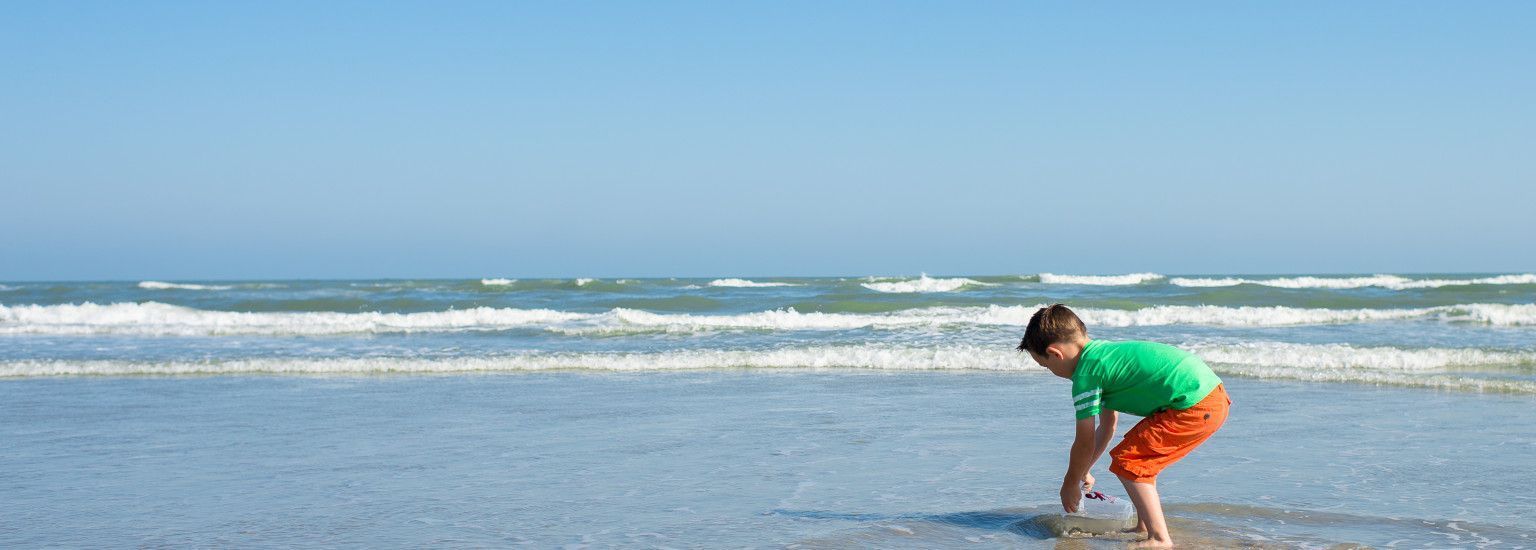
Swimming in the sea
If you go on holiday to Ameland, of course you want to swim in the sea, we totally get it!
After all, what could be nicer than a cooling dip in the sea! Of course you can, but, keep a few things in mind. After all, the sea does not take you into account.
Beaches and lifeguards
Ameland has 27 kilometres of beach. During the summer months, KNRM lifeguards are present at the main beaches. These are the main beaches at Hollum, Ballum, Nes and Buren.
You will find these main beaches at Ballum, Nes and Buren at the end of the Strandweg, at Hollum at the end of the Oranjeweg (past the lighthouse).
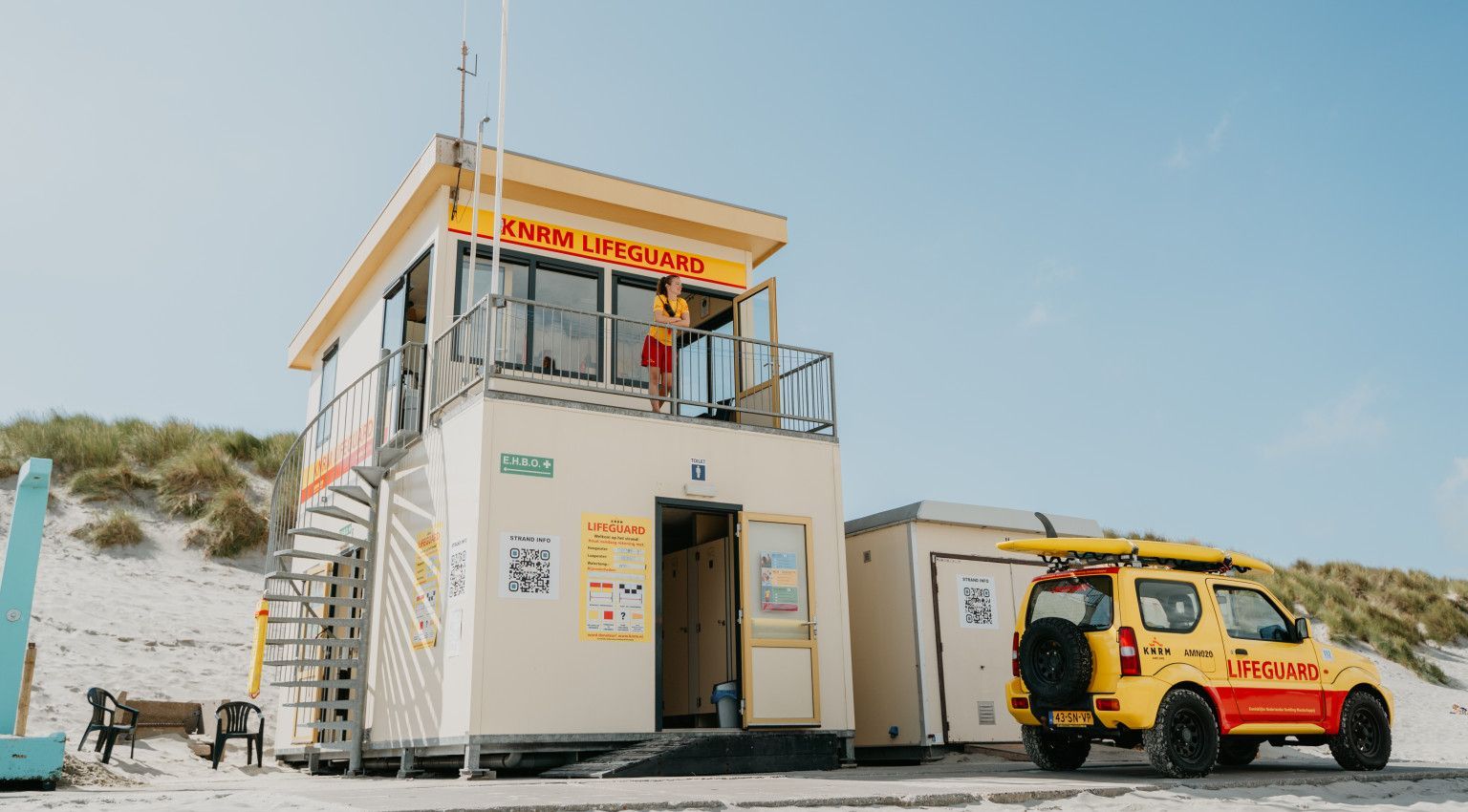
Royal Dutch Lifeboat Institution
The Royal Dutch Rescue Society (KNRM) was founded in 1824. KNRM's mission is to rescue, assist and prevent casualties at sea and on the wide inland waterways, 24/7 and under all circumstances. These may be water sportsmen, but also victims in commercial shipping and from offshore activities.
KNRM Lifeguards
During the summer months, KNRM lifeguards on Ameland supervise the sea and the beach on a daily basis. KNRM lifeguards are deployed to provide beach visitors with a fun and, above all, safe day at the beach. They do this by supervising, informing, preventing dangerous situations as much as possible and carrying out rescue operations when people get into trouble.
Beach posts lifeguards
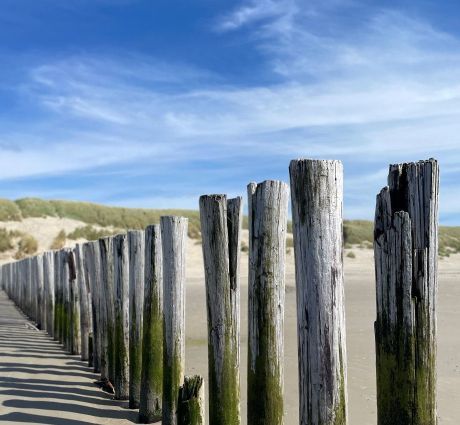
First aid and more
-
Per beach, lifeguards keep an eye on about 500 metres of beach: 250 metres on either side of the lifeguard post. The lifeguards also act as a first-aid post. There are also beach wheelchairs available so you can enjoy the beach even if you are less agile.
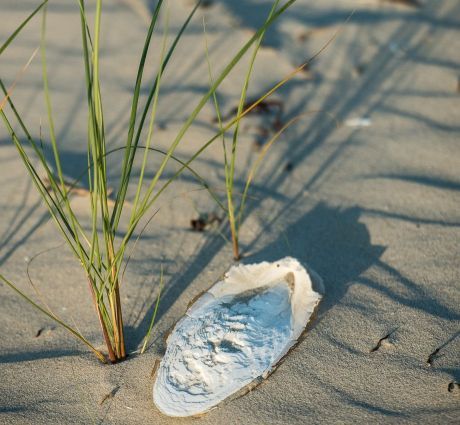
Presence of lifeguards
-
KNRM lifeguards will guard the beaches at the four beach entrances on the following days:
- 21, 22, 23, 28, 29 and 30 June 2024
- 6 July to 1 September 2024 daily
- 6, 7, 8, 13 and 14 September 2024The lifeguards will be on the beach on the above dates from 10:00 - 18:00.
Meaning Beach flags
The lifeguards know exactly how the sea works and keep an eye on everything. They do all they can to ensure that everyone can enjoy themselves safely on the beach and in the sea. Lifeguards have flags at their posts. These flags are hoisted or placed by lifeguards according to the current situation. They do this to inform and warn bathers, swimmers, water sports enthusiasts and other recreational users of the risks associated with the sea. We explain some of them below:
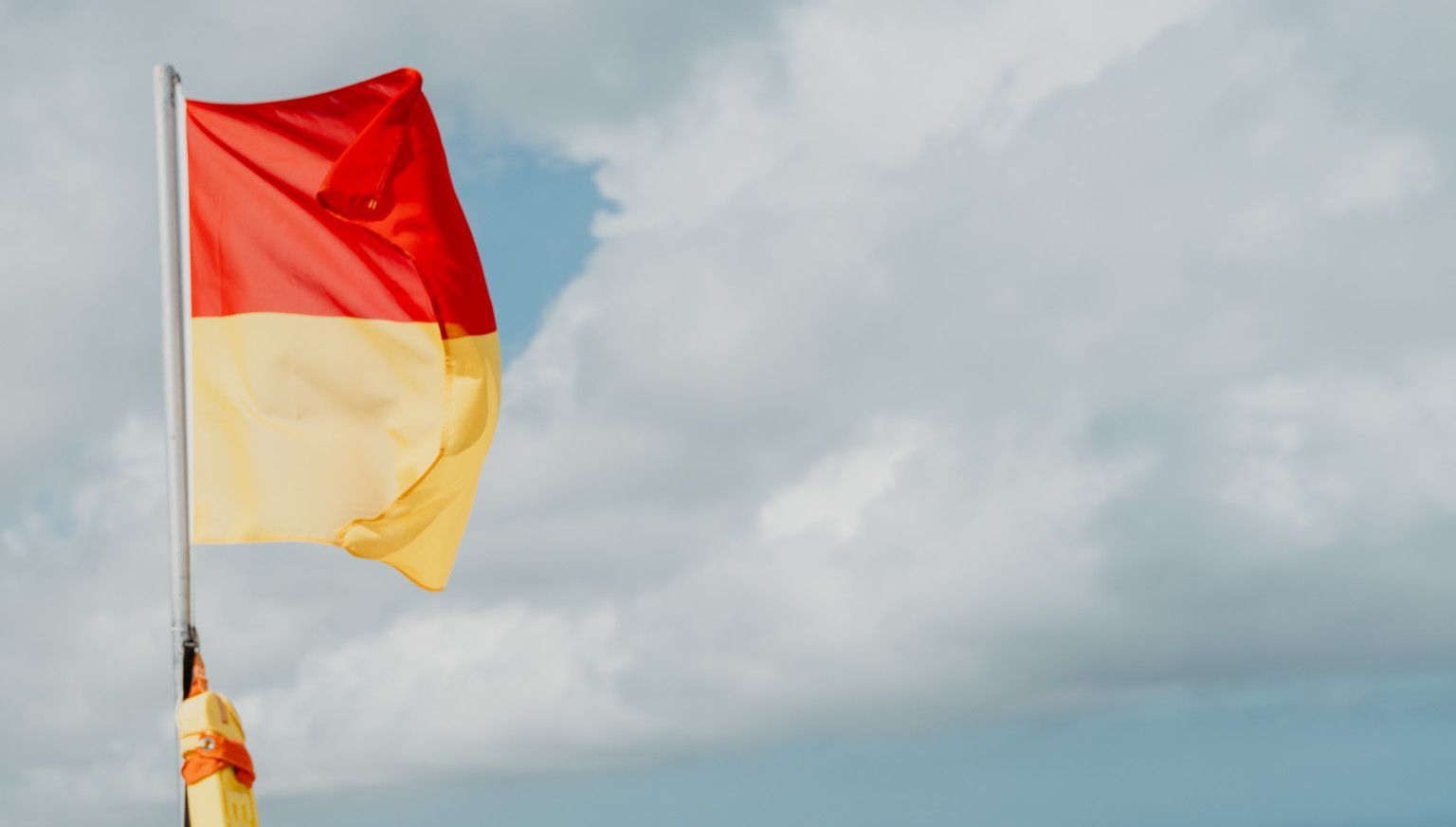
Red with yellow flag
Lifeguards present
This flag indicates that the lifeguard station is open and supervised by qualified lifeguards in the working area of the rescue team.
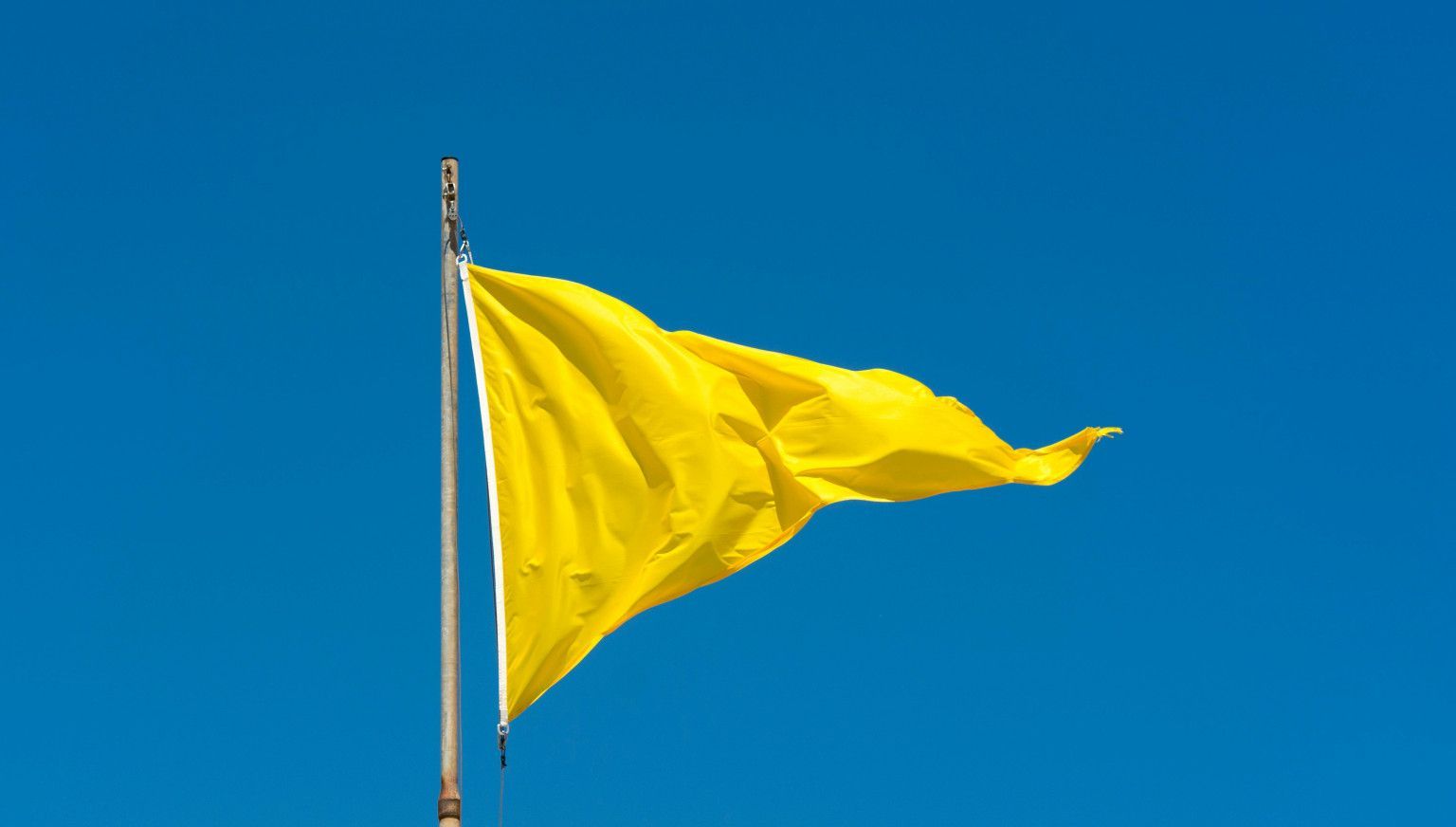
Yellow flag
Swimming can be dangerous.
Due to strong undercurrents, swimming is not recommended for inexperienced swimmers. Swimming, bathing and other activities on or in the water are discouraged. Swimmers and bathers should be extra careful and vigilant.
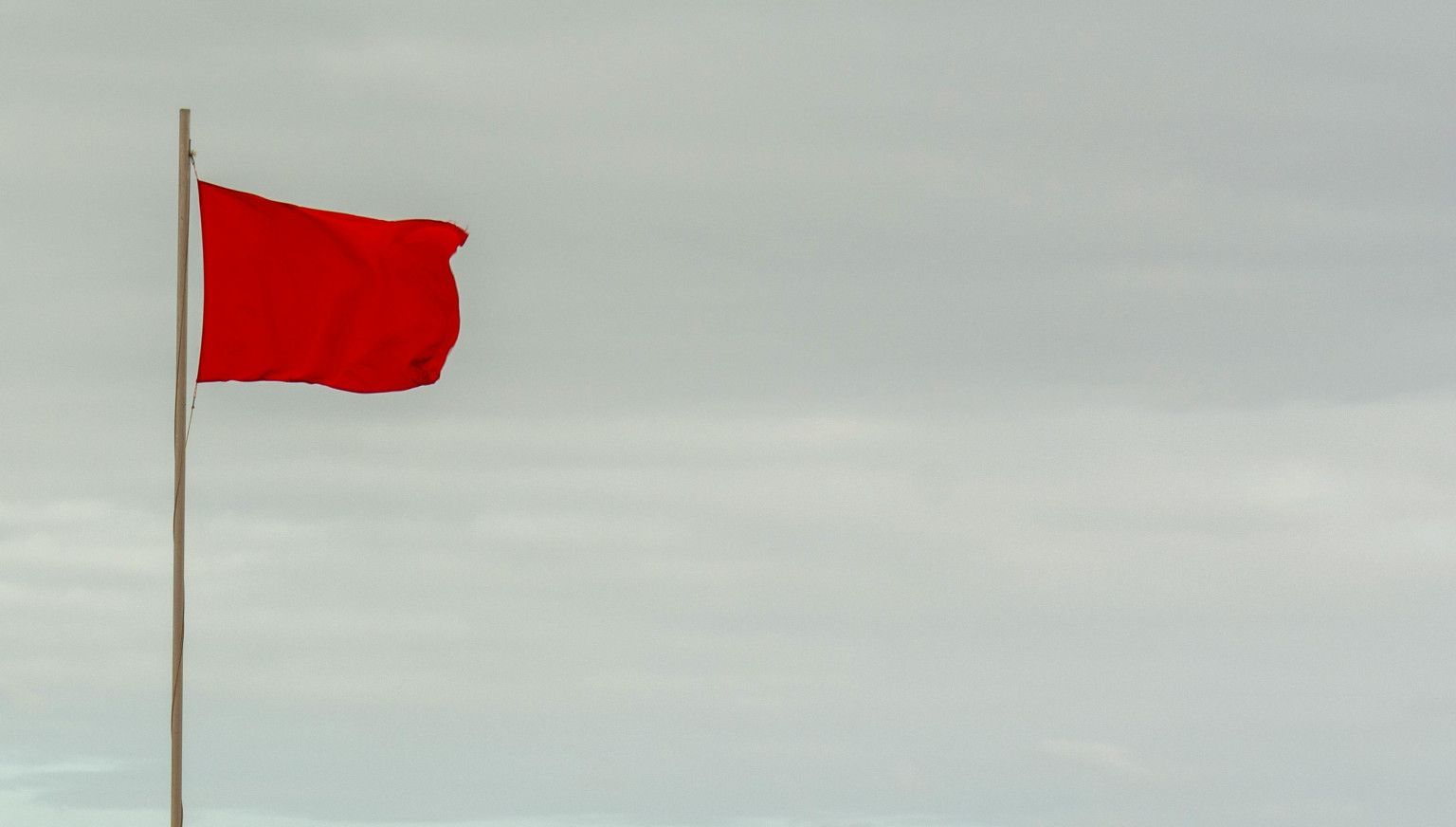
Red flag
Do not swim! Very dangerous!
Swimming is very dangerous. Due to very strong currents, swimming is highly discouraged for both experienced and inexperienced swimmers. Bathing and other activities on or in the water are also strongly discouraged.
Lifeguard Tineke's story
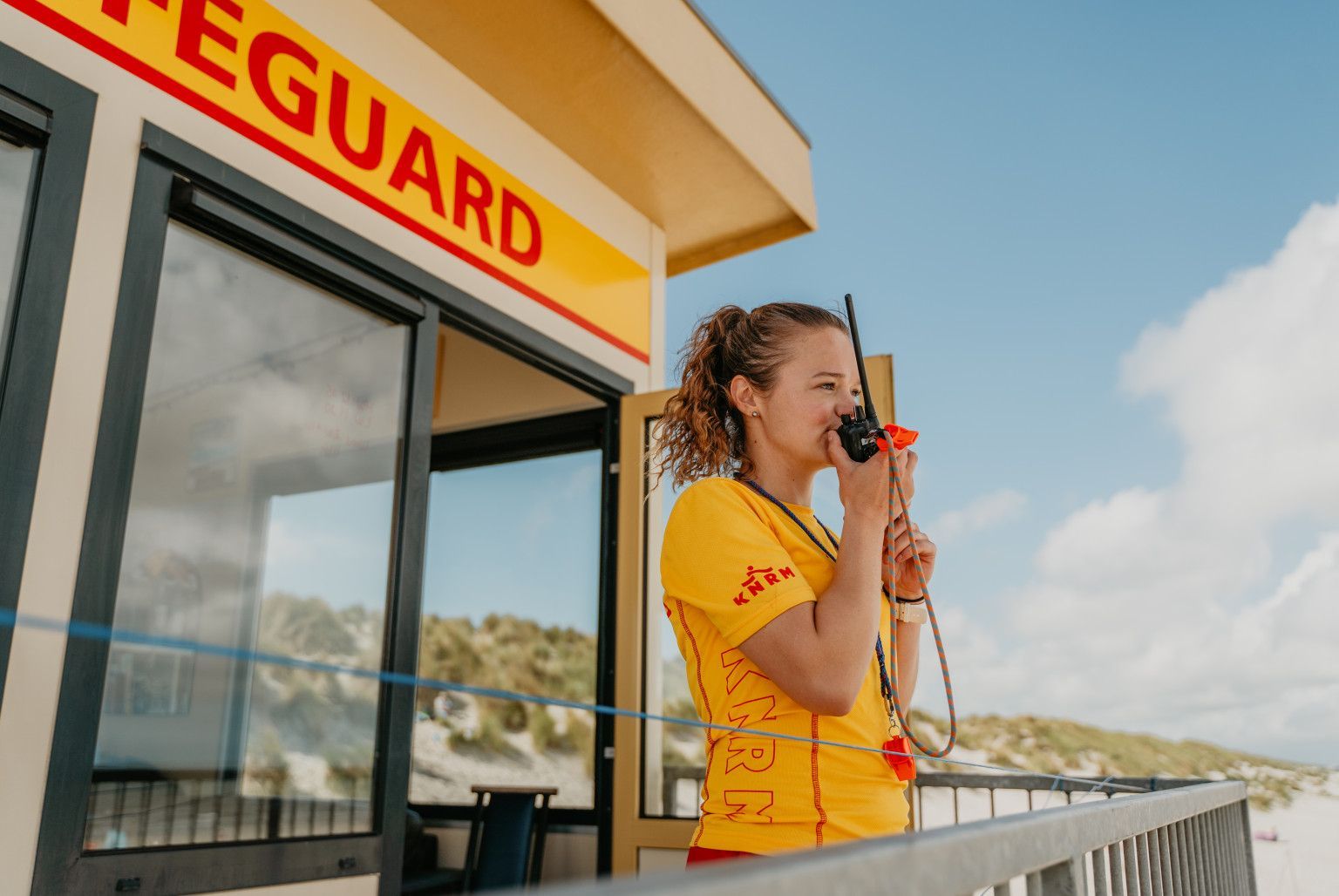
"As lifeguards, we are responsible for beach safety, and this entails various tasks, such as assessing sea and beach conditions and analysing risks."
Tineke normally lives in Groningen, but fell in love with the island, the beach and the sea as a little girl. So she went to Ameland as a teenager for holiday work in the hospitality industry. After two seasons, she thought it would be even more fun to work on the beach, and she has now been dedicating herself to providing beachgoers with a fun and, above all, safe beach day for ten years.
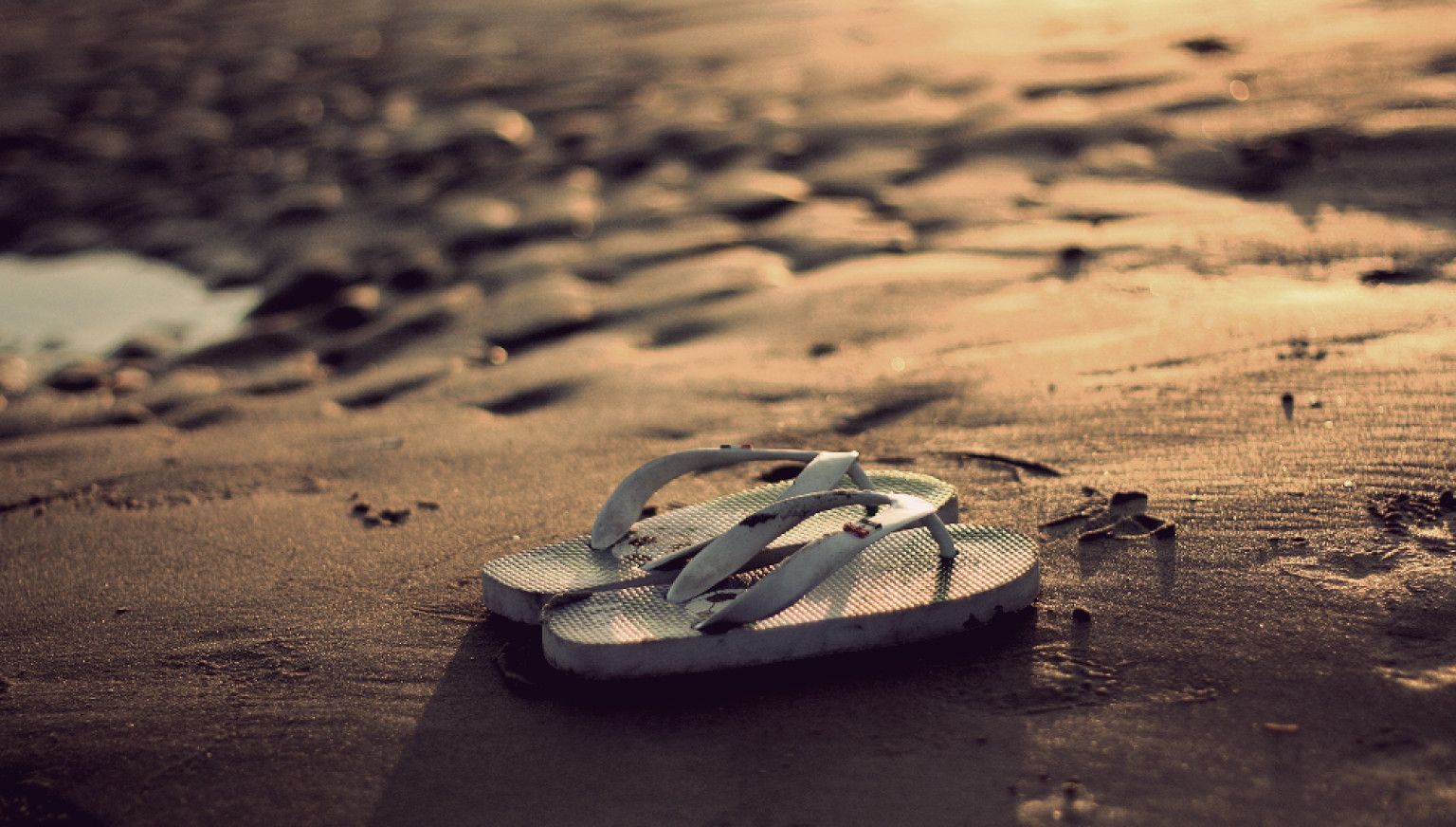
Bath times
Want to swim or bathe outside the monitored areas and/or periods? Then stick to the bathing times:
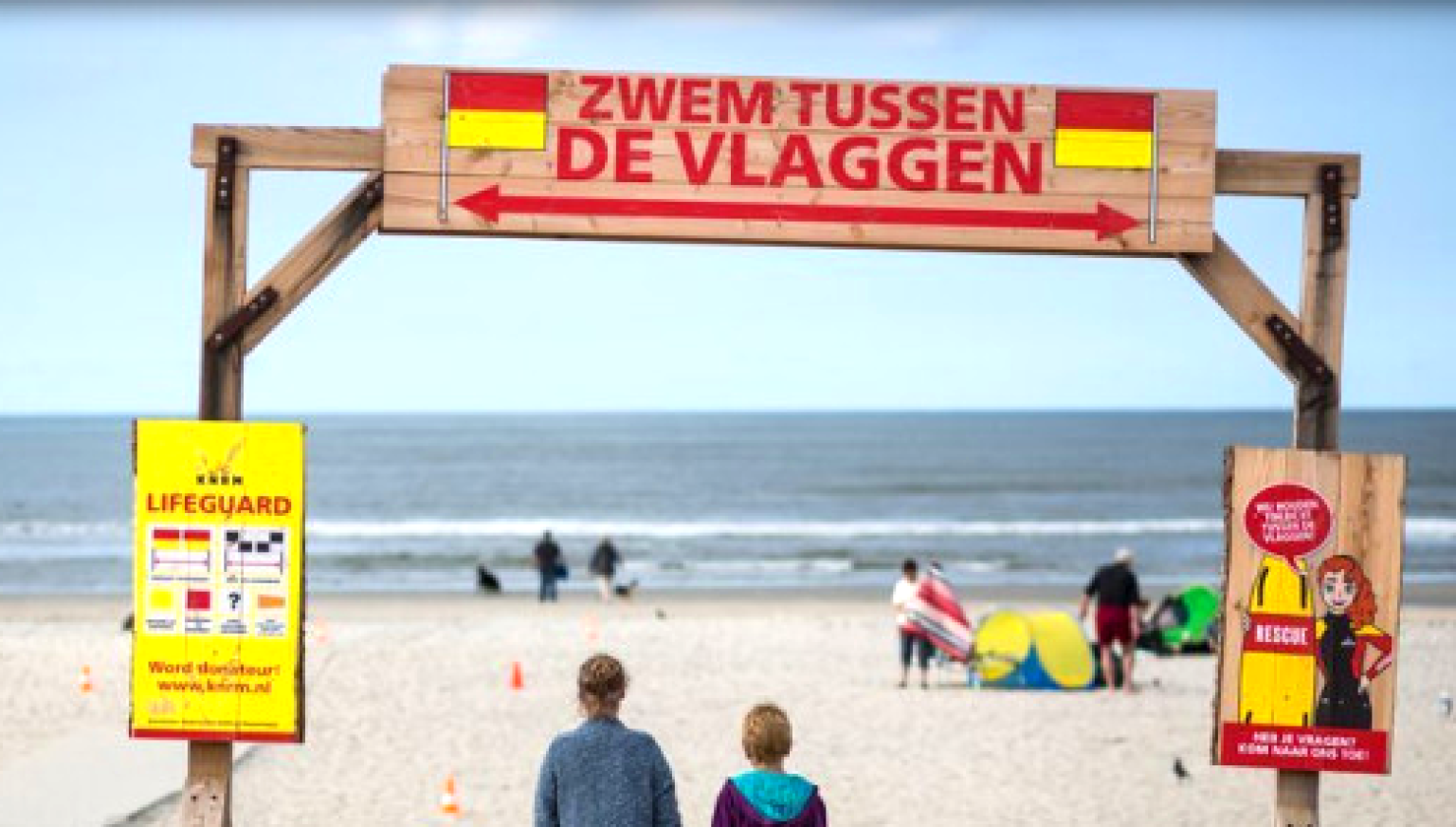
Municipal signs
At every guarded beach, there is a blue sign at the dune crossing. On it, the Municipality of Ameland explains whether or not activities are allowed on the beach.
Caution: rip currents
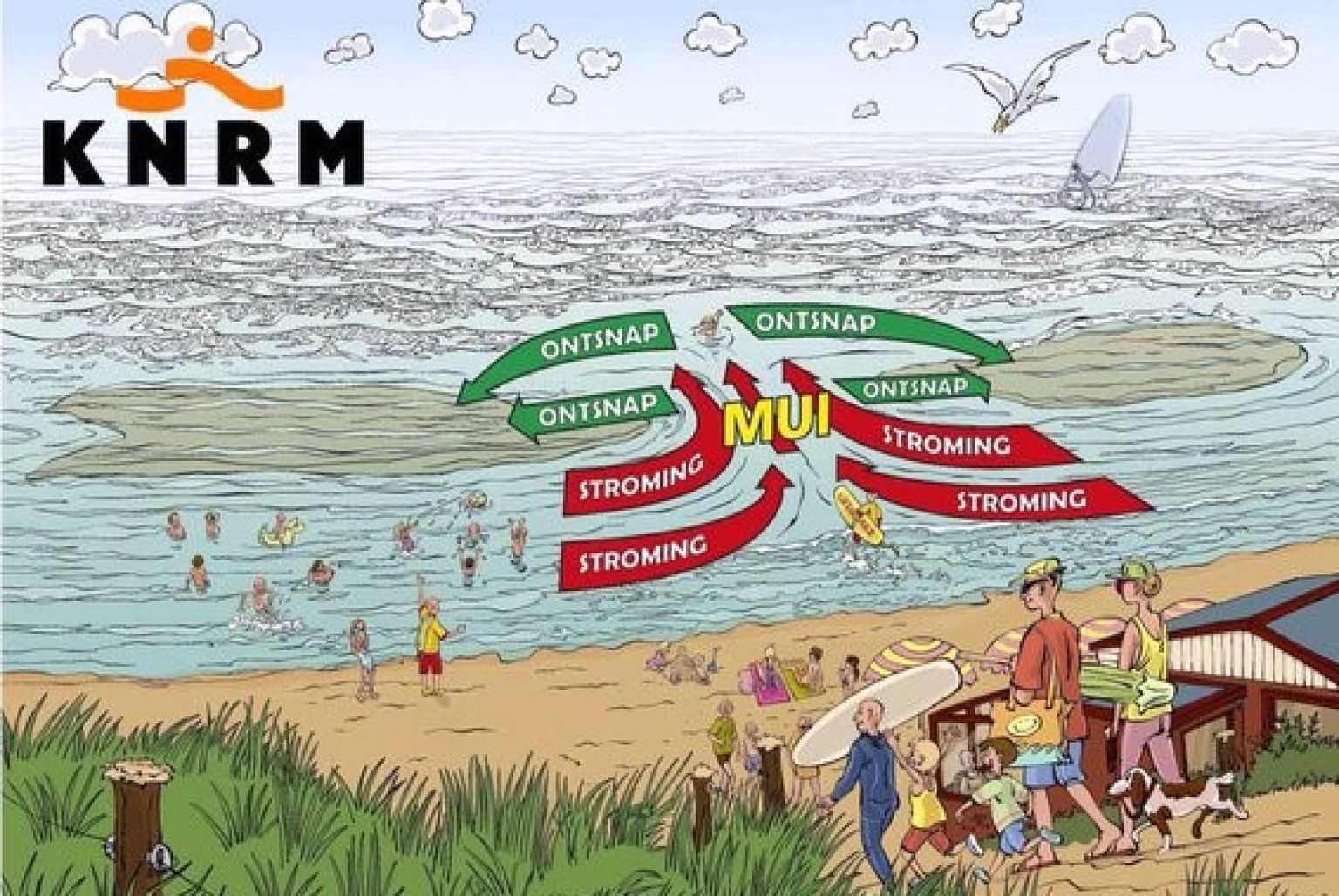
What are rip currents?
A major danger for swimmers are rip currents. These are strong currents that pull you out to sea from the coast. Wind at sea makes the waves stronger, making the mussels even more powerful.
When do rip currents occur?
They occur during low and high tide, bad and good weather, and large and small waves. KNRM lifeguards are trained to recognise rip currents. There are no rip currents in the swimming area between the flags.
In doubt whether it is safe to swim? Ask one of the lifeguards or do not go further than up to your knees in the water. Even good swimmers can get into trouble because of rip currents.
What to do if you get caught in a rip current
A rip current will never pull you underwater, but it will carry you away from the shore. The most important thing is to stay calm and follow these steps:
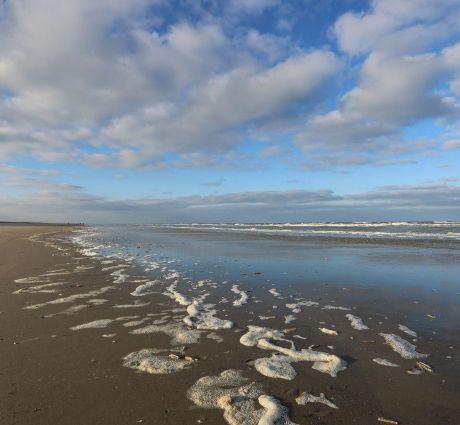
-
Stay calm and call for help:
Panic makes it harder to act rationally. Shout and wave to attract the attention of the lifeguards or other beachgoers.
-
Don't swim against the current:
Don't swim straight back to the beach against the current, it takes too much energy and makes you tired quickly.
-
Keep floating:
Let yourself drift with the current and try to stay afloat as much as possible.
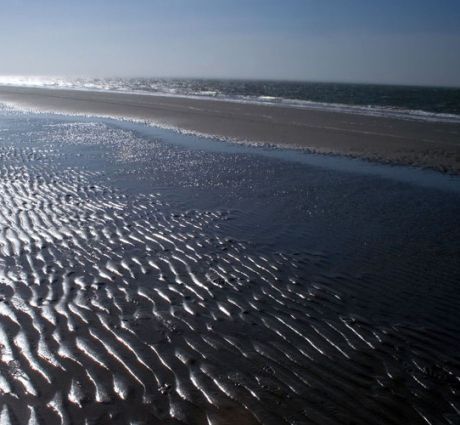
-
Swim parallel to the shore:
Don't swim straight to shore, but parallel to it to get out of the current. Mui currents are usually narrow, and by swimming parallel you can get out of the current quickly.
-
Use the waves:
Let the waves help you towards the shore, but keep swimming sideways until you feel the current diminish.
-
Let yourself be carried away:
If you can't swim, let the current carry you gently to behind the sandbanks and waves, where the current subsides. Wait there for help.
Once you are out of the rip current, swim quietly back to the beach.
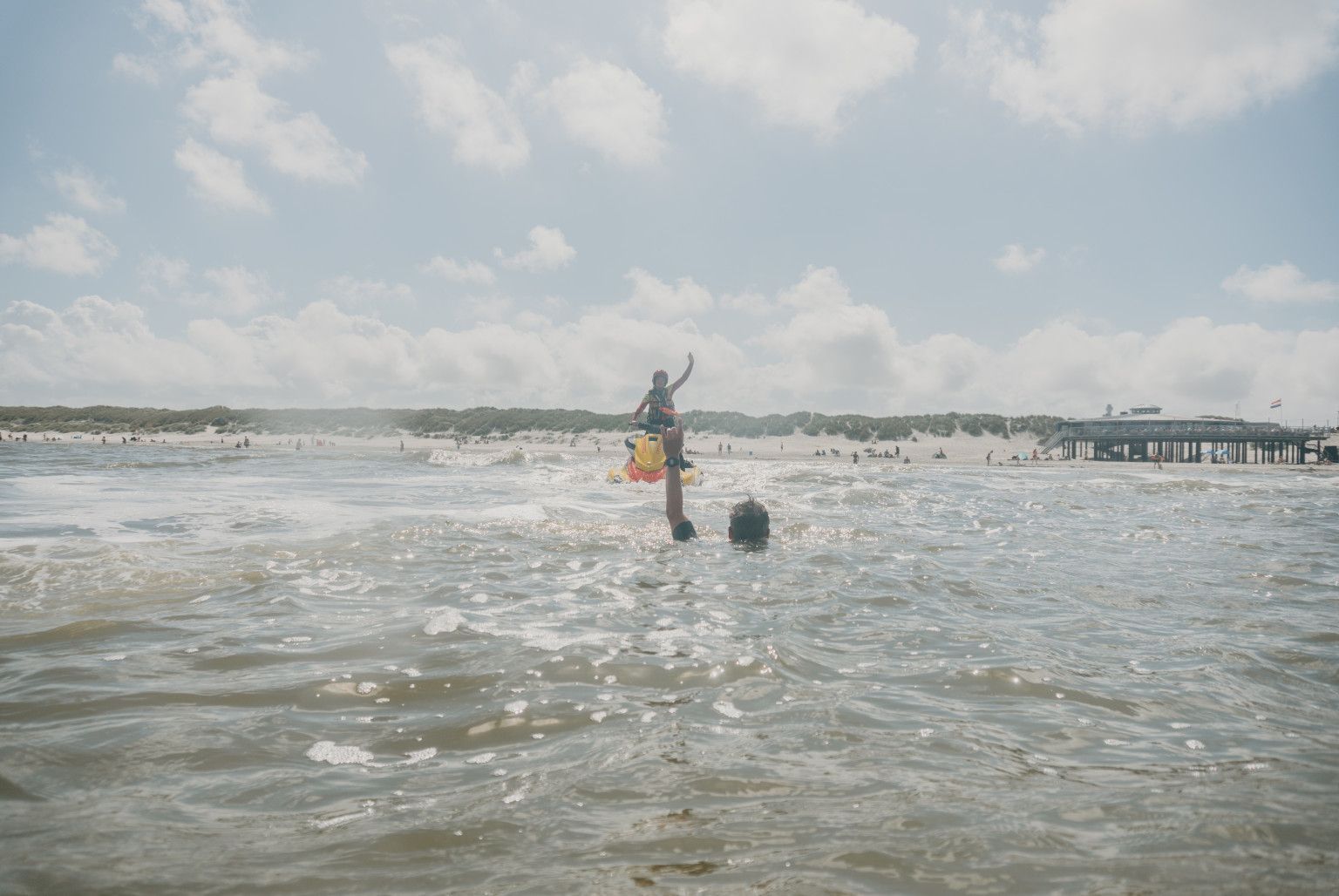
Recognizing Rip Currents
You can recognize a rip current by the following characteristics:
- Calmer Water: A rip current often appears calmer than the rest of the sea because the current pulls the water away.
- Foam Streaks: You often see foam or seaweed being pulled out to sea in a strip.
- Color Difference: The water in a rip current can be a different color, often darker due to the current carrying sand and other materials.
- Waves: Waves break less or not at all in the area of a rip current because the water is flowing outward there.
Always stay alert and ask the lifeguards if it's safe to swim when in doubt.
Feel free to swim, but swim consciously!
Going swimming in the sea? Then don't go further than hip height into the sea and don't swim where you can't feel the bottom. This is because of currents and sudden depths.
Our tips and advice:
- Swim near guarded beaches
- Follow the flag of the KNRM Lifeguards
- Do not enter the sea further than hip height.
- Swim along the shore, do not swim away from the shore
- Never swim alone and look out for each other
- Do not swim around breakwaters.
- Always stay close to children playing in the sea, so you can help if needed.
- Pay extra attention to children near muddy parts of the beach; mud has a suction effect, children can get stuck and get into trouble when the water rises.
- Do not use floating objects, such as air mattresses, rubber boats and balls
- Do not swim at low tide as the water can cause strong currents.
- Take extra care during spring tides.
- Be careful at high tide. On a sandbank, you can quickly get trapped by the water.
- Watch out for rip currents.
Do you see someone in the sea in distress? Don't go into the water yourself, raise the alarm!
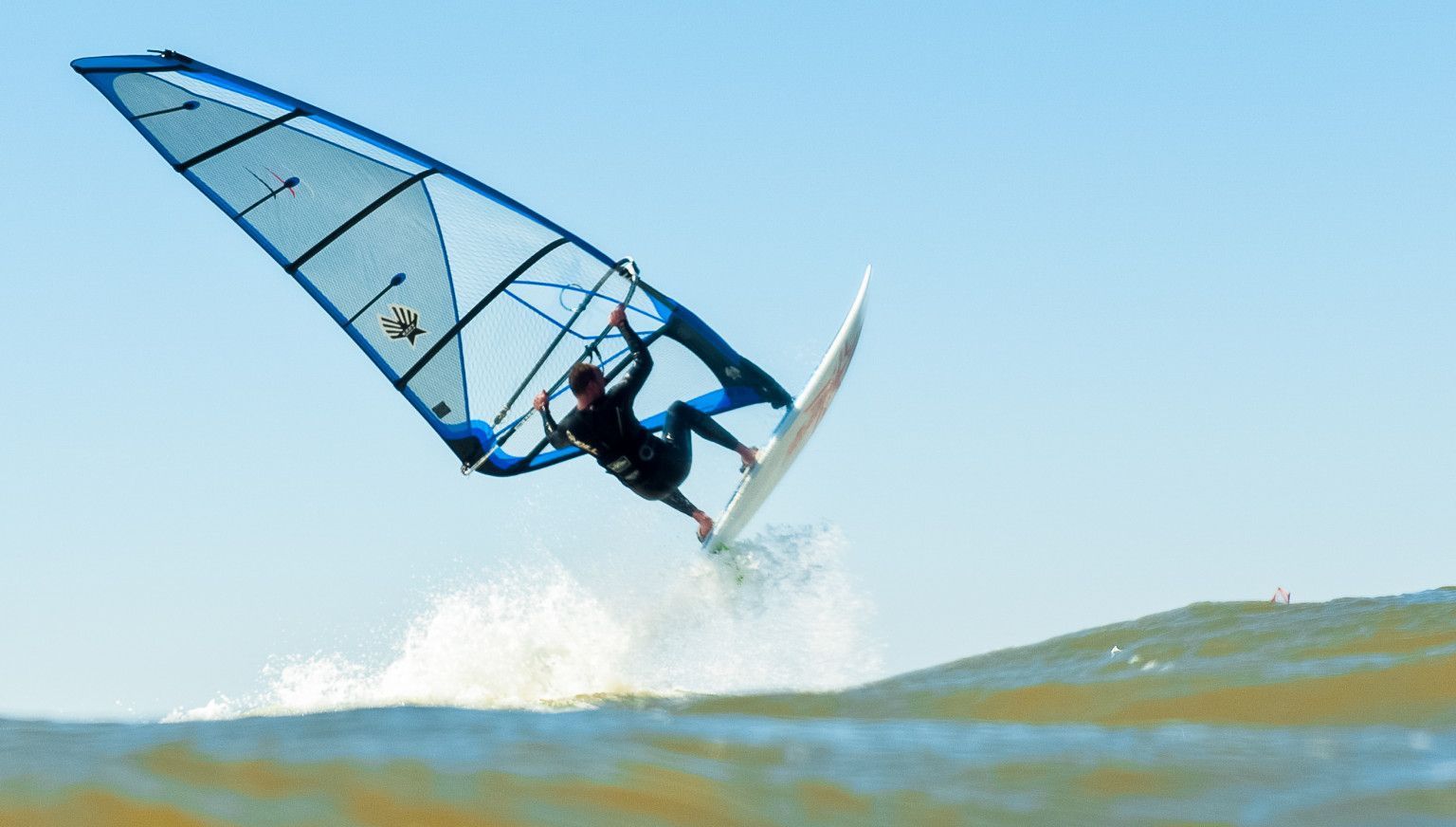
Tide table
Curious about the tides during your stay on Ameland? Then take a look at our tide table. The table shows exactly when high and low tide is each day. Please note that this is the tide table for the Wadden side, near Nes. Different tides apply for the North Sea beach and the other villages on Ameland.
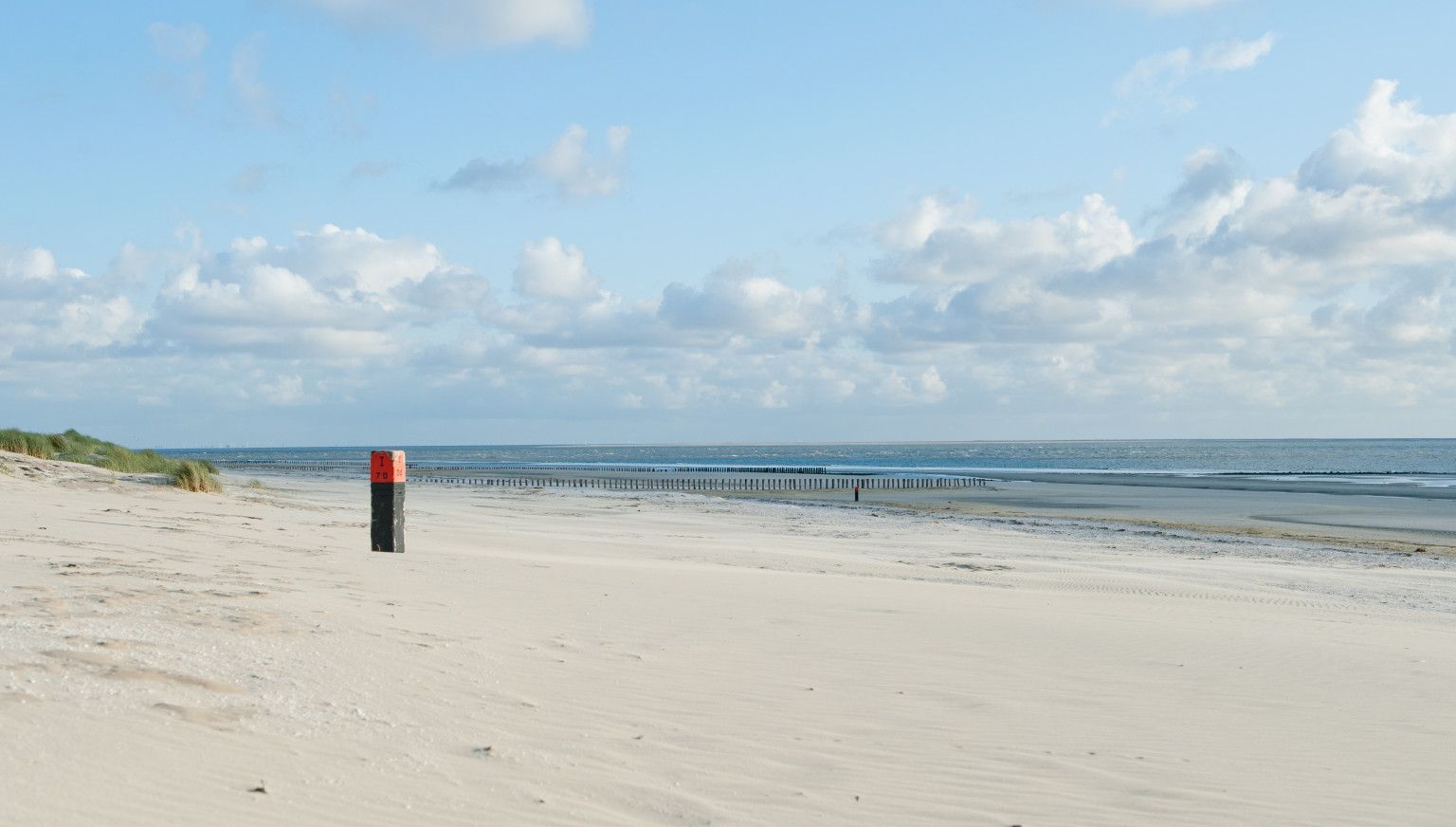
Beach
The tides of the North Sea are very noticeable on Ameland's beach. Ebb and flow alternate and ensure that there is plenty to do on the beach.
Taking a walk on the beach, fishing, paddling in the sea, looking for shells, etc. is all possible! The beach offers hours of fun.
Enne... Don't like swimming in the sea? Then you can also have a great swim on Ameland in Zwembad de Schalken.